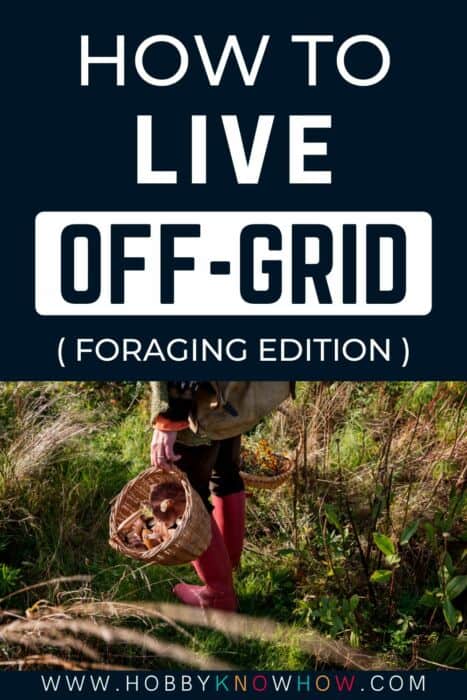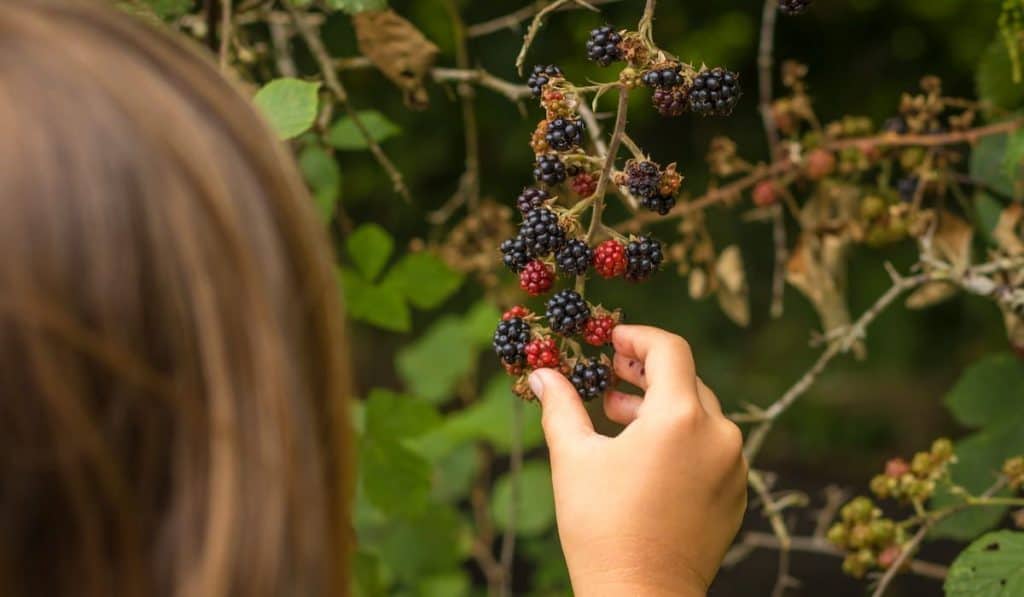There’s a new way of living, a new trend being adopted by several individuals worldwide. This lifestyle aims at eliminating consumerism to resort to a self-sufficient way of life.
It’s called living off the grid. This way of living promotes a healthier and cost-effective lifestyle.
Living off-grid requires making some adjustments, for example, adopting activities like recycling, composting, and reducing plastic waste.
Other more determined individuals will go the extra mile to live without public service utilities and hunting or foraging for their food.
What is Living Off-Grid?
Living off-grid is similar to living in the wilderness without reliance on or access to modern technology.
While off-grid, you survive by using only basics, including water, food, and power, all of which you can obtain from natural resources.
Your food will come from foraging or hunting, your water from rainwater or nearby water source, and power from the wind or sun.
What is Foraging?
Foraging is the act of searching, identifying, and gathering uncultivated food that grows in the wild.
This food generally includes plants, herbs, fruit, mushrooms, and nuts.
For most of human history, our ancestors survived by foraging for wild vegetation, and it was not by choice.
Today, people forage to break away from overly processed food and to get in touch with the natural source of food, among other reasons.
Benefits of Foraging
When you’re off the grid, your only source of food is the surrounding nature.
You probably went berry picking as a child with your family on a walk through the woods for fun.
While it can be an enjoyable activity, foraging offers other benefits too. They include the following:
It’s Free
Foraging food is free of charge. Okay, it will only cost you time, which you’ll spend enjoying nature anyway, so it’s time well spent.
Some of the food you’ll find in the wild costs an incredible amount for the quantity you get in the food market or supermarkets.
For example, pine nuts, wild leeks, fresh mushrooms can cost $20 or more per pound.
Nutrition
Edible wild fruits and plants in the wild have more nutrients than what you can find at the grocery store.
Wild food does not lose its nutrients during transportation from state to state or via radiation.
Also, natural food is completely natural, unlike supermarket produce that’s either GMO or hybrid.
The nutritional content is high in wild plants. For example, dandelion leaves have seven times the nutrients in store-bought spinach.
As you walk through the wild, the vitamin D from the sun is a worthy bonus.
Unique Flavors
Did you know that wild food foraging is a hot trend in culinary travel? And rightfully so.
Gourmet chefs have realized that this natural food is packed with amazing flavors that bring a unique taste to the palette.
You won’t miss any of the store-bought food with the same everyday taste. These new flavors will bring excitement to your mealtime in the wild.

Outdoor Exercise
Searching for wild food requires walking (sometimes long distances), climbing, stretching, and bending, which all give you a great workout.
The significant aspect of this form of exercise is that it’s pleasurable, at your own pace.
There’s a cooling effect that keeps you relaxed if there are lots of trees because you don’t get too tired.
You can’t compare it to running in one place on a treadmill.
Connecting with Nature
When you buy food from the grocery store, you’re not thinking about where it comes from and how it grows.
This creates a disconnect with nature. Imagine walking through the wild and plucking off berries or mushrooms with your own hands.
Also, each season comes with different fruits, berries, or leaves.
Watching the seasons change and the food grows, connects you to nature and makes you feel like a part of it.
Sustainability
Wild food doesn’t require harmful pesticides and toxic chemicals to grow. Also, you don’t need fossil fuels to harvest and ship them.
Wild plants protect themselves from pests and grow by depending on natural conditions like rain, air, sunlight, and beneficial insects.
To harvest them, all you have to do is pluck, collect from the ground, or dig a bit. These zero input and output plants have no carbon footprint.

Guidelines to Follow While Foraging Off-Grid
Foraging is not just a matter of picking and plucking whatever you want however you want it.
Like many other activities, it has rules and guidelines to follow that will ensure a safe and enjoyable process.
Learn about Foraging
Like many other activities, it’s important to learn from those who have gone before you and have loads of experience.
It will help if they are from your area as that makes it easy to identify plants and look out for unexpected events that are area specific.
You can find these experts through the internet by searching ‘foraging clubs in (your area)’ or checking social media foraging groups.
You can also look for area-specific books that teach you the various aspects of foraging.
Here’s three books on Amazon we recommend:
Foraging for survival
- Boudreau, Douglas (Author)
- English (Publication Language)
- 208 Pages – 10/13/2020 (Publication Date) – Skyhorse (Publisher)
The foragers Harvest
- Thayer, Samuel (Author)
- English (Publication Language)
- 368 Pages – 05/15/2006 (Publication Date) – Foragers Harvest Press (Publisher)
Edible wild plant guide
- In-depth Guide to edible plants
- Identifies poisons and edible plant characteristics
- Over 100 color photos
- U.S. Department of the Army (Author)
- English (Publication Language)
- 160 Pages – 06/23/2009 (Publication Date) – Skyhorse (Publisher)
For example, how to identify and collect, how to prepare or eat a meal with your bounty, and general knowledge about these plants, fruits, nuts, and flowers.
It’s essential to know about the plant, what nutrients it contains and what other uses you can apply if need be.
Be Safe
Are you 100% confident in identifying edible wild plants? Never eat anything you’re not sure is edible.
This is the most important rule you’ll have to follow out in the wild because it will keep you and other people you’re with, alive.
Some edible mushrooms look just like poisonous ones, so be extremely careful.
Know the parts of the plant that are edible. Some plants’ flowers and berries are edible, while the other parts are poisonous.
If you can’t identify edible wild plants yet, start eating common wild foods that you’re sure of.
For example, blackberries, black walnuts, pawpaws, mulberries, and plums.
Keep a basic first aid kit on hand and stay away from areas that may be affected by pesticides or herbicides.
Follow the Law and Show Respect
Foraging anywhere without permission may land you in trouble with the owners of the land and the law.
You must know whose land you intend to forage on and ask their permission first.
Offer them some of your foraged food or something else in return.
It’s illegal to forage at most national parks, but each park has different rules, so ask the management for the written guidelines for foraging.
Keep the land clean and tidy by picking up any trash you find along the way. Trash it with yours when you get to a trash can.
When you dig holes to harvest roots or tubers, fill the holes back up. Ensure that you leave the area healthy and looking good.
Also, wasting food is disrespectful, especially foraged natural food. Never dispose of foraged food. Eat or distribute everything you collect.
Embrace Sustainability
Harvest wild food from flourishing plants in vibrant areas. Be mindful of the local conditions. While it may be legal to forage a particular plant, it may be scarce in some areas.
Pick only from the plants that are in abundance. Do not pluck off or cut a whole plant or the only plant.
Simply take your scissors and cut off some of them (5%), leaving the mother plant to reproduce.
If you can’t identify a plant, don’t harvest it. Instead, cut a small piece or take a picture of it and research with experts or the internet to identify it.
It helps to educate yourself about the various wild species.
Harvest without trampling other plants. After foraging, the area should look as natural as you found it.
Leave some fruits and berries for animals that feed on them and other foragers that may come along.

What Foods to Forage for While Off-Grid
Wild food from the wilderness should not be a cause for panic and fear. While some food from the wild is dangerous, many plants, fruits, and trees are healthy.
They provide minerals, nutrients, protein, antioxidants, and natural fats, which are more beneficial for your body than what our modern diets provide.
The need for survival may push you to eat any leaf or fruit you find but be careful not to consume anything you’re unsure of.
Some experienced foragers have died from poisoning by eating food they couldn’t identify.
Let’s take a look at some healthy wild food you can forage.
Nuts
Healthy nuts to forage include hazelnuts, pecans, walnuts, hickories, acorns, groundnuts, and pine nuts.
Roots
Root crops you can forage include chicory, burdock, and dandelion.
Wild Fruits
Tasty wild fruits include wild strawberries, mulberries, pawpaws, madrone berries, juneberries, blackberries, raspberries, and American persimmons.
Wild Greens
Dandelions, miner’s lettuce, stinging nettles, wood sorrel, lamb’s quarters, and Japanese knotweed.
Wild Mushrooms
Popular mushrooms for foragers are chanterelles, maitake, morels, and chicken of the woods.
Final Word
When trying out a new wild food for the first time, eat a tiny portion just in case you get allergies or develop a food intolerance.
Foraging takes time to learn. Be patient in identifying edible plants from dangerous ones.
This seems like a tedious task, but it can be the difference between life and death, making it worth the effort.
The freshness, flavor, nutrients, connection with nature, and savings make foraging an exciting and worthwhile adventure.




